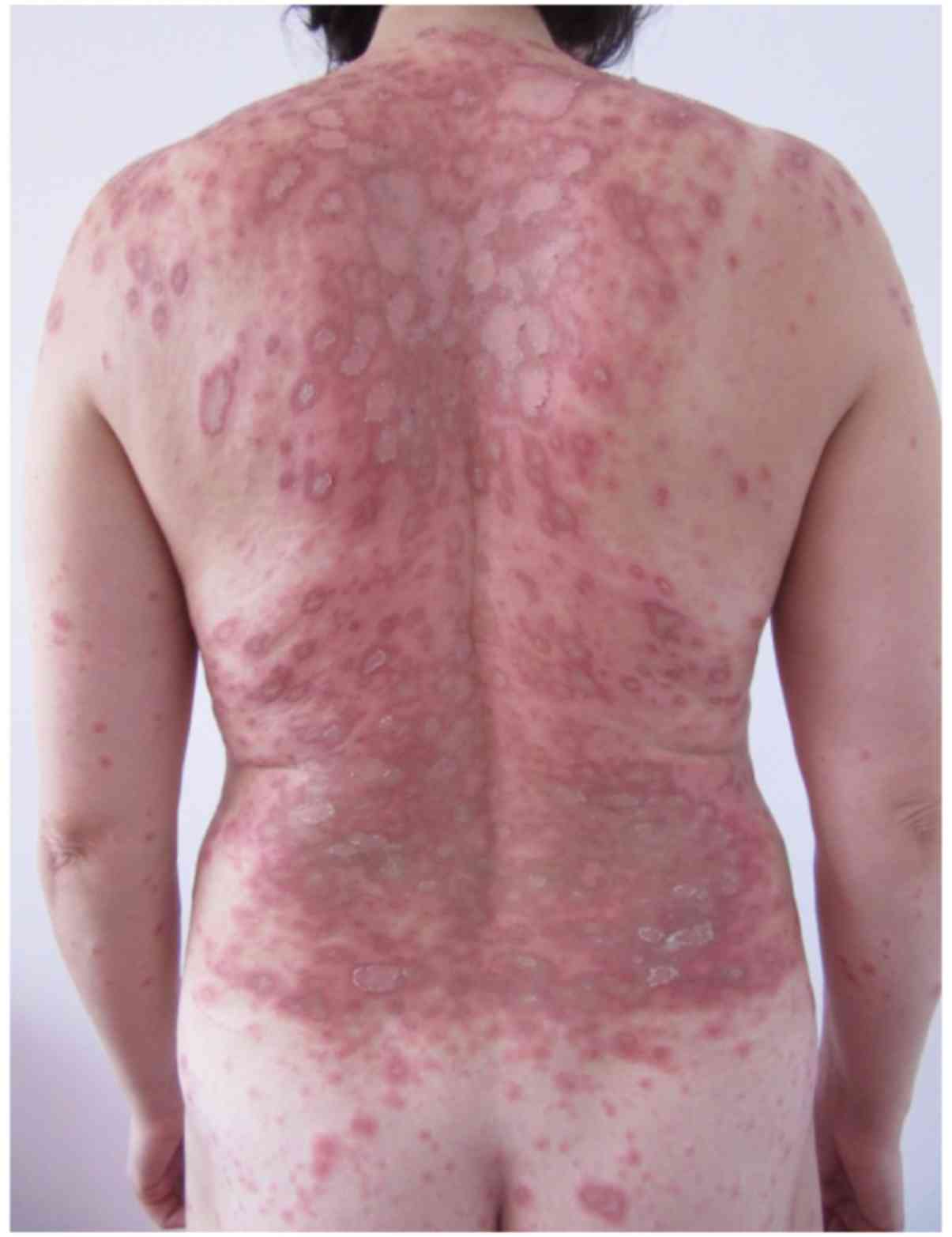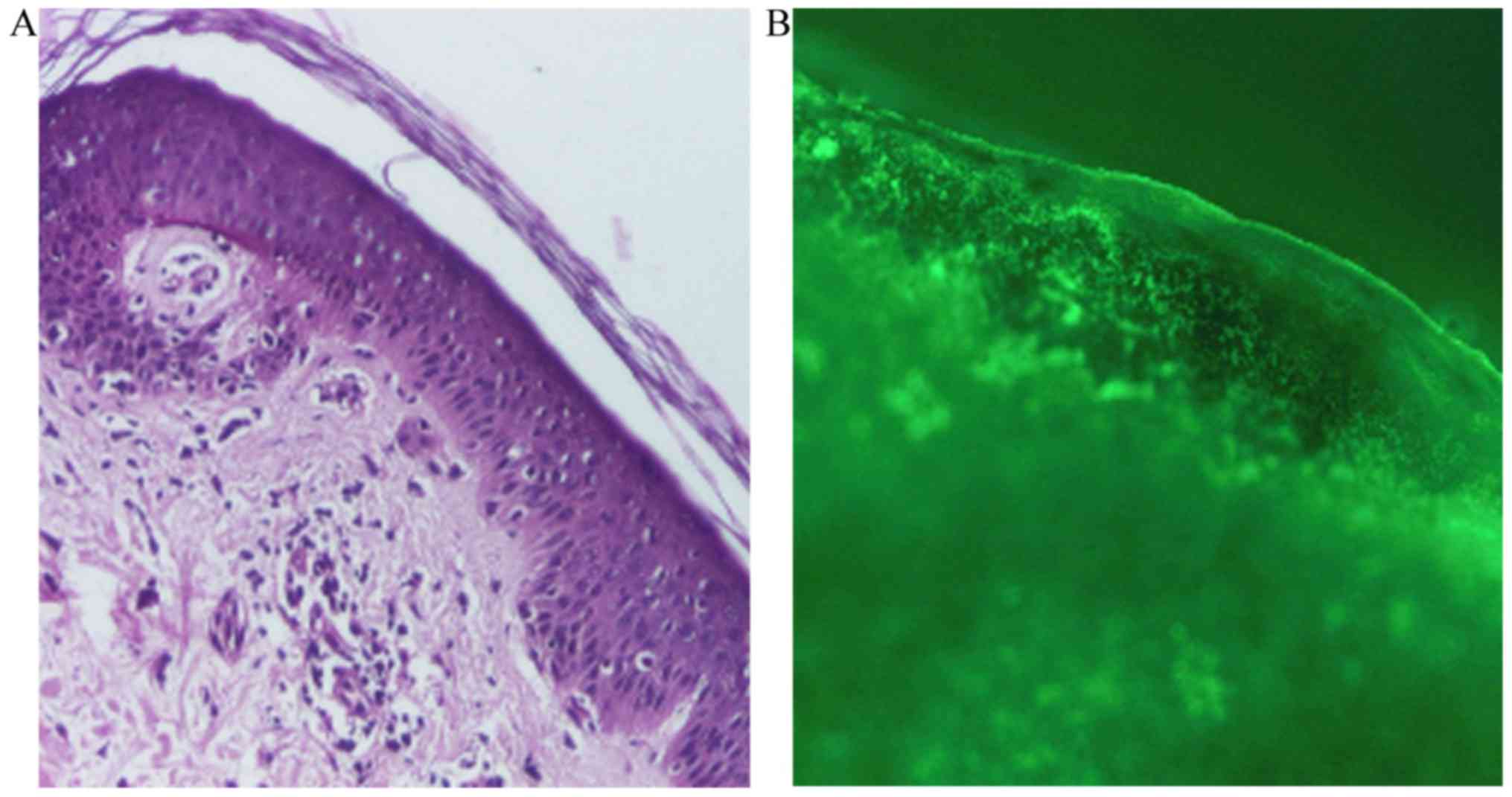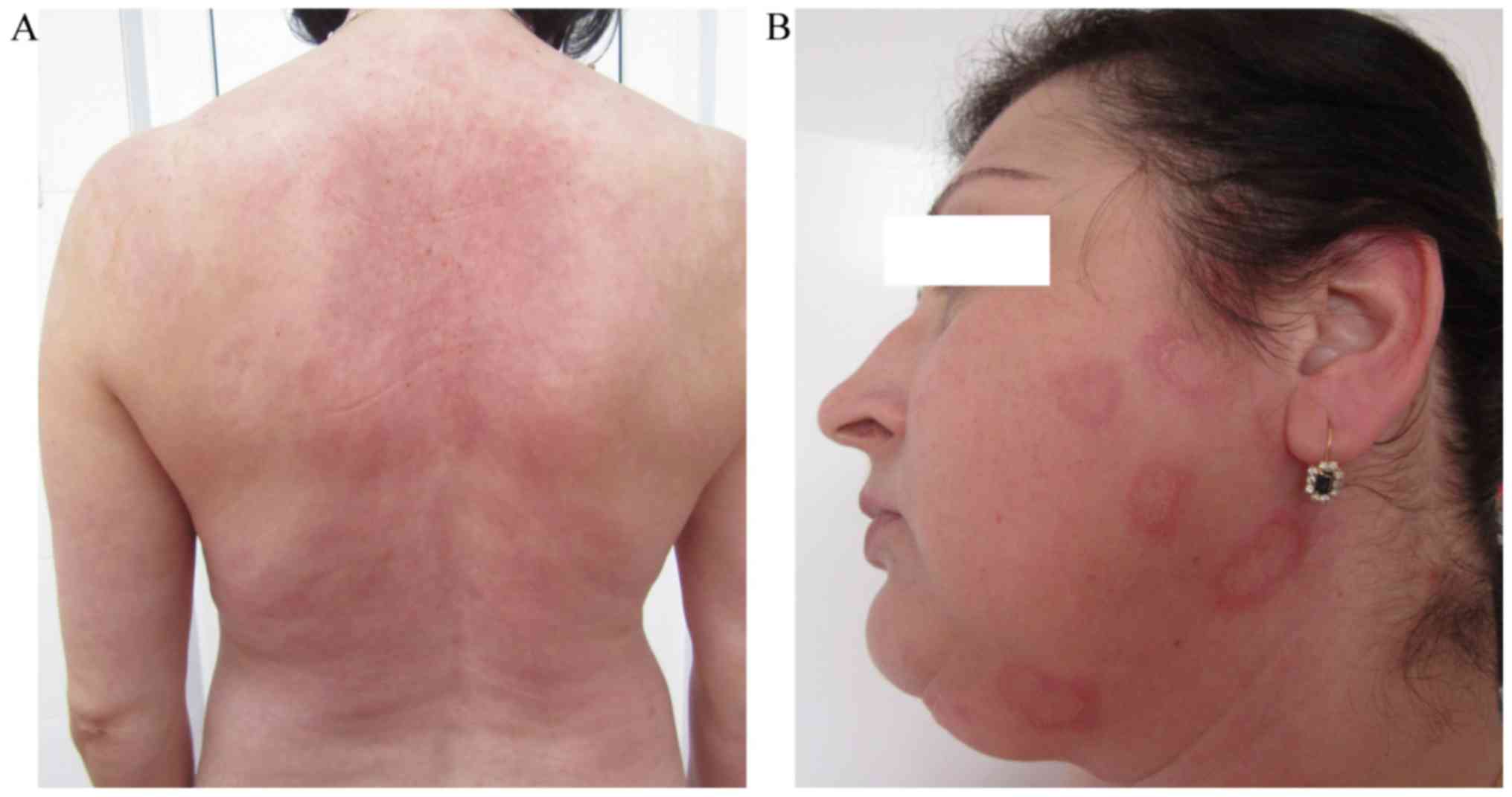Drug-induced Rowell syndrome, a rare and difficult to manage disease: A case report
- Authors:
- Published online on: November 23, 2017 https://doi.org/10.3892/etm.2017.5557
- Pages: 785-788
-
Copyright: © Brănișteanu et al. This is an open access article distributed under the terms of Creative Commons Attribution License.
Metrics: Total
Views: 0 (Spandidos Publications: | PMC Statistics: )
Total PDF Downloads: 0 (Spandidos Publications: | PMC Statistics: )
Abstract
Rowell syndrome is defined as the association between lupus erythematosus, erythema multiforme‑like lesions and characteristic immunological changes including positive tests for rheumatoid factor, speckled antinuclear antibody, positive anti‑Ro or anti‑La antibodies. The present report presents the case of a 45‑year‑old female patient who was previously diagnosed in January 2010 with terbinafine‑induced subacute cutaneous lupus erythematosus and was admitted for a skin eruption consisting of erythematous‑papular erythema multiforme‑like lesions, primarily on the trunk and limbs. The associated symptoms consisted of fatigability, myalgia and gonalgia. In October 2015, the illness reoccurred ~1 week after the initiation of Helicobacter pylori eradication treatment. Anti‑Ro antibodies, rheumatoid factor and antinuclear antibody tests were positive. Given the patient's medical history, clinical manifestations, and laboratory, histopathological and immunofluorescence microscopy findings, a diagnosis of Rowell syndrome was made. Systemic corticosteroids (methylprednisolone; 0.5 mg/kg/day) and immunomodulatory therapy (azathioprine; 50 mg/day) were administered with the associated medication (omeprazole, 20 mg/day; KCl, 1 g/day) and topical dermocorticoids (fluticasone propionate 0.05% cream; 1 application/day), with a favorable outcome. The major diagnostic criteria for Rowell syndrome are the presence of lupus erythematosus (acute, subacute or systemic), erythema multiforme‑like lesions and positive testing for antinuclear antibodies. The minor diagnostic criteria for Rowell syndrome are chilblains, the presence of anti‑Ro antibodies and positive testing for rheumatoid factor. A diagnosis of Rowell syndrome is made if the patient exhibits all major criteria and at least one minor criterion. The present case met all diagnostic criteria, excluding the presence of chilblains. Notably, in this case there was a co‑occurrence of subacute lupus erythematosus and Rowell syndrome lesions, which was drug-induced.












